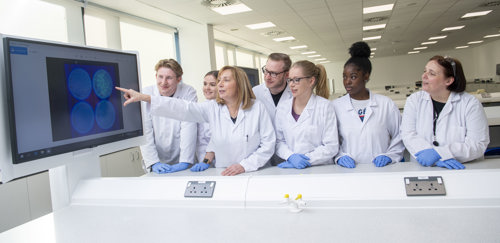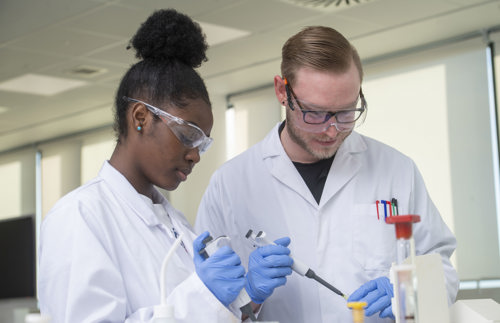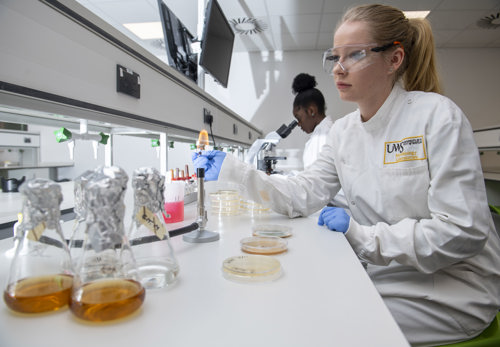Facilities
Lanarkshire Campus
Our life sciences facilities at Lanarkshire Campus opened in September 2019. They are equipped to deliver state-of-the-art practical classes and carry out cutting-edge research. They include:
Microbiology/Infection Control laboratory
This laboratory is used to investigate how microorganisms that can cause healthcare associated infections colonise and persist in healthcare environments and to test the efficacy of cleaning and disinfection practices.
Cell culture facilities
Specialised and dedicated facilities are available to culture specific mammalian cell lines and primary cells. They provide a sterile environment to protect cell lines for expansion cultures and harvesting. These facilities support our research in arthritis, COPD, reproductive immunology, stem cell research and parasitology.

Flow cytometry facilities
Flow cytometry helps us understand how cells are behaving through their protein expression. Through this technique we can define separate cell populations that can characterise tissues and how our bodies respond to infections or behave during adverse immune reactions.
Tissue specimen examination laboratory
This laboratory is used to provide support in pathology analysis through histology. This diagnostic technique helps visualise cell infiltration of tissues that can be indicative of disease states (autoimmunity, tissue remodelling, necrosis, tumour growth etc).

Zoology laboratory
This laboratory is set out to enable the study of biodiversity, animal behaviour, aquatic biology, entomology, ecology and ecotoxicology. Equipped with controlled temperature rooms, research here focusses on understanding environmental impacts on animals and how this knowledge can be used to improve environmental and animal health.
Fluorescent Microscopy suite
Fluorescent microscopy is used to identify molecules in cells through fluorescent labelled antibody or membrane or DNA binding dyes or probes. Fluorescent microscopy is used in both biomedical and zoological research to understand what cells are composed of and how molecules are distributed in the cells. Examples include understanding the consequences of gene expression through protein localisation, and defining the symbiotic relationship between bacteria and free-living amoebae.

Pre-Hospital Simulation Centre
This is a unique, adaptable space providing simulation-based education which gives students the opportunity to develop and practice discipline-specific skills. The Centre places students involved in paramedic science, nursing, midwifery, and health and social care in realistic scenarios where they use their assessment and clinical decision-making skills to treat patients in a controlled environment.